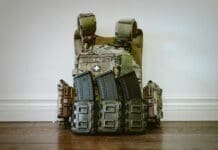This post is also available in:
 עברית (Hebrew)
עברית (Hebrew)
Regularly testing waterways and reservoirs is a never-ending responsibility for utility companies and municipal safety authorities. A new smart city technology can help municipalities save money and operate more efficiently.
Current methods of testing water quality haven’t changed in a long time. With the advent of drones powerful and reliable enough to deploy in professional and industrial circumstances, the situation has changed.
A technology introduced by Nixie is changing water sampling. The solution involves either a custom-built sample collection arm or an in-situ sensor arm. The sample collector is basically a long vertical arm with a locking cage for a sample container. You put the empty container in there, fly the drone out to the location, then submerge the arm. When it flies back, the filled container can be taken out while the drone hovers and a fresh one is put in its place to bring to the next spot. This switch can be done safely in winds up to 18 MPH and sampling in currents up to 5 knots, the company said.
This allows for quick sampling at multiple locations — the drone’s battery will last about 20 minutes, enough for two to four samples depending on the weather and distance. Swap the battery out and drive to the next location and do it all again.
It should be mentioned that the drone is not operating autonomously; it has a pilot who will be flying with line of sight. But even so, that means a team of two, with a handful of spare batteries, can cover the same space that would normally take a boat crew and more than a little fuel.
Currently the system works with the M600 and M300 RTK drones from DJI.
The drone has precise GPS locations for each sample and does not disturb the water when it dips in. No matter how carefully you step or pilot a boat, you’re going to be pushing the water all over the place, potentially affecting the contents of the sample, but that’s not the case if you’re hovering overhead.
According to techcrunch.com, a smarter version of the sampler, currently under development, includes a set of sensors that can do on-site testing for all the most common factors: temperature, pH, troubling organisms, and various chemicals.

























